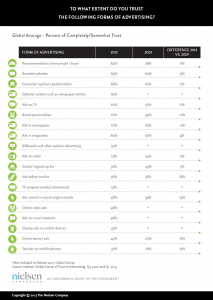Vloggers, Bloggers and Influencers – The Big Brothers and Sisters of Social Media

Citizen journalists, social media influencers and brand advocates of the online world wear many hats. For advertisers and marketing professionals, this group is the new billboard, magazine ad and 30-second commercial. For public relations professionals, it’s an additional person to engage in the assembly line of social-media-driven purchasing power and influencers. But who are these people, and more importantly, what can they do to make or break an organization?
It is well understood that the social media all-stars, with some boasting millions of followers in their queue, have the benefit of reaching large audiences. The real question begins to form when the perceived success of making publics “aware” ends. Do these social media mavens impact behavior of their followers? And if so, to what extent?
While these individuals are grouped into the broad and non-definitive category of “the influencer,” a further dissection of who they are, what they do and why it is important may give communicators insight into how these advice, recommendation and DIY gurus have the power to shape opinion, attitudes, and when done right, even behavior.
So if we want to better know who these people are and how they affect our lives and jobs, we should note and become cognizant of the difference in roles and magnitude of effect(s) among influencers, brand ambassadors and advocates.
According to Jay Baer of Convince and Convert, “having a lot of Twitter followers doesn’t give you the power to drive action; it gives you the power to drive awareness.” While making publics aware of an organization can evoke potential interest in the minds of those who hear about it, driving action-based behavior is where the rubber hits the pavement. Baer also notes that true behavior-driving influence requires an audience as well as advocacy, not awareness-procuring influence.
“Advocacy is driven by the depth of conviction, and influencers are typically less committed to the product or company than are actual customer advocates,” Baer said.
On top of the need for distinction between brand advocates and influencers is the potential levels of impact these individuals incur on his or her publics. As YouTube and other social media influencers boast follower-counts in the millions, communications pros and aspiring pros must be able to venture into the minds of influencers and advocates to provide research-based conclusions that signal these publics’ levels of trust and behavior patterns in social, personal and behavioral spheres of impact. As luck would have it, current data spells it out for us, giving communicators a starting point to venture from.

According to Neilsen, 84 percent of survey respondents revealed that word-of-mouth recommendations, or earned-advertising, from other consumers they knew were the most trusted source in terms of product opinions. Consumer opinions posted online ranked 68 percent in 2003 for product-opinion trust.
With over 12 million subscribers on YouTube, Zoella, 25-year-old London beauty and lifestyle guru, sits pretty at number 12 in Media Kit’s 20 Top YouTube Influencers List. Do her 12 million subscribers and purchasing publics consider her to be a “consumer they know”? Brand marketers seem to think so.
As YouTube stars accumulate followers in mass quantities, brands’ communication teams welcome these influencers and advocates into their messaging strategies and tactics with the hope that having strong social connections with these stars will attract audiences on social media that wouldn’t be reachable otherwise. More than 150 brands have partnered with a variety of talent on YouTube to produce engaging and entertaining ads, according to Lauren Johnson’s article. With over 1 million views, Macy’s new eight-week series, “The Next Style Star,” recruited YouTube fashion gurus like Claire Marshall and Jenn Im to spearhead the search for the next design moguls.
Beauty- and fashion-related channels aren’t the only magnets of viewership on YouTube’s top “Trending” list. In fact, the most influential YouTuber, Felix Arvid Ulf Kjellberg — also known as PewDiePie — is a Swedish web-based comedian and producer whose YouTube series called “Let’s Play” and video commentaries have accrued about 43 million channel subscribers. It seems as though YouTube and other social media platforms like Instagram, Tumblr, Blogger, Facebook and Pinterest, cater a vast variety of content that any individual with access to the internet cares to consume.
While the reach of YouTube, Instagram, Vine and Vimeo stars can’t be denied, what should be understood by public relations professionals is the lack of potential for behavior-driven impact that media impressions base on “likes” and “follows.” As companies make the stride to court social media stars, individuals in the field of communications must rely on research and data to prove that these actions are meaningful and carry the intended impact to reach their intended publics.
Takeaways:
- Consider: the differences between the influencers and advocates on social media.
- Remember: “Likes” and “follows” do not prove impact; engagement and research-based findings do.
- Understand: the cyclical connection that exists among publics, the social-media mavens they follow, the brands who endorse them and your job as a public relations professional.
- Do: verify the ability of these influencers and advocates to create awareness or reach versus behavior-driven change and impact, and determine what this means for you and/or those you represent.
- Keep close to heart: the ethical responsibility of public relations professionals and aspiring professionals to those she or he represents. Consult the Public Relations Society of America Member Code of Ethics to double-check.
—
Lana Nasser is a graduating public relations student at the University of Florida and a member of the Community Service and Advocacy Committee at the UF PRSSA Chapter. She spends her free time adding to her record collection, reading Kerouac, London and Thoreau, and learning about the world of public interest communications. See her portfolio for more of her published works, find her on LinkedIn and follow her on Twitter @NasserLana.

Hi Lana,
I really enjoyed your article and think it highlights a very current and prominent development in the PR world. I definitely believe that the impact of the newly popular status of “social influencers” is immeasurable. Many of these influencers almost hold a celebrity status in the minds of their followers. Therefore, a positive feature from them carries a lot of weight, not only as promotional material, but as an authentic human opinion rather than a paid ad. As social media only continues to grow I see these influencers becoming an excellent tool for brands, particularly ones that produce products rather than services.
Best,
Leah Tobak- Writer/editor at platformmagazine.org